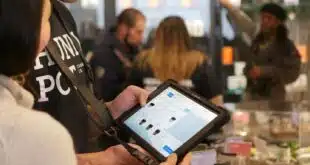What’s happened to the e-commerce checkout and why it isn’t easier to make a payment.
Instant access is the byword for online retailers. It’s what online shoppers want all the time and what e-retailers strive to provide so their consumers can buy when they want. Epitomizing that is a frictionless checkout experience, one that makes it painless to authenticate and authorize the payment.
But that ideal type of checkout remains just that, an ideal. While e-commerce is now in the midst of its third decade of widespread availability since the deployment of the first Web browser, issues surrounding the online checkout process abound.
“Too often, merchants see consumers get all the way through the funnel to add items to their carts, but then leave their sites without checking out,” says Arnold Goldberg, vice president of merchant product and technology at San Jose, Calif.-based PayPal Holdings Inc. “Why? Oftentimes it’s because the checkout process is filled with friction. Customer have to type in user names, passwords, credit or debit card information, shipping and billing addresses, and if they don’t have their card information on hand, or can’t remember their password, that can result in an abandoned cart.”
The urgency and necessity for dealing with the online checkout experience is clear. E-commerce sales comprised 9.1% of all U.S. retail sales in the third quarter of 2017, says the Census Bureau of the Department of Commerce. That’s up from 8.2% in the same quarter of 2016. In three years, e-commerce sales are expected to total $708 billion, according to Javelin Strategy & Research.
The Changing Consumer
The effects of this growth are rampant. Traditional malls are struggling as big-name retailers close stores and consolidate locations. Some retailers have closed up entirely as the challenges posed by merchants with more astute online-sales methods hammered them.
At the root is the changing consumer. With smart phones and tablets found in most households—77% of U.S. consumers have a smart phone, the Pew Research Center says—shoppers are used to researching, finding, and comparing prices from the comfort and convenience of wherever they are using the device in hand.
That expectation of easy shopping access extends to how they pay. Few consumers want to enter a 16-digit credit card number, a card verification code, billing and shipping addresses, and related information on a smart-phone screen.
Consider that e-commerce platform provider Mobify, in its Monthly Mobile Commerce Benchmarks for 2017, noted that in October, the latest month with available data, the average conversion rate on a desktop computer was 5.9% for average order values between $100 and $175. That compares to 4.3% for tablets and 1.9% for phones. Orders of less than $100 and more than $175 share a similar pattern.
“Consumers are moving to mobile as their primary computing device, and at the same time, expect instant access to the things they want and need at the point of discovery,” says Goldberg. “Because of this, retailers can no longer wait for customers to come to them.”
The phenomenon is putting extra pressure on merchants and their payments providers to find ways to expedite the checkout process.
“Clunky checkout drives up what I call [the] ‘insult rate,’” says Andy Barker, senior director of strategy and growth for global payments at Magento Inc., a major e-commerce platform provider based in Campbell, Calif. “One of the worst things to do when a customer is handing you money is to look at them and say, ‘That’s not good enough,’” Barker says.
Difficult mobile-commerce checkout experiences also will drive down conversion rates, encouraging consumers to shop elsewhere with easier checkout processes.
Making consumers complete forms at checkout is one of the biggest issues in e-commerce, says Richard Btaiche, product manager at Shopify Inc., an Ottawa, Ontario-based e-commerce platform and payments provider.
“The majority of online buyers are still spending a lot of time fumbling around forms,” Btaiche says. “Any distraction or notification could prevent customers from completing their purchases, so the longer it takes to check out the more chances of distraction.”
Profit Vs. Security
Why isn’t the online checkout experience easier, especially years after the introduction of e-commerce to the United States? Chalk that up to a payment card system built for face-to-face transactions, where authentication procedures were designed with the customer present.
Though much more sophisticated today, the U.S. payments system favors profit over security, says Suresh Dakshina, president of Chargeback Gurus, a McKinney, Texas-based chargeback-management company.
Certainly, security is important, but the tradeoff is that to make a payment service very secure usually requires stringent authentication measures, ones that many retailers are not willing to impose because they may prevent more legitimate sales than fraudulent ones. Many retailers are willing to accept some fraud loss in expectation they will make up the costs with more legitimate transactions.
In Europe, for example, many markets opt for more security, Dakshina says. “Most of them do not have one-click purchase because they have made it understood that [consumers] have to go through multiple authorizations,” says Dakshina. Still, though the online checkout experience continues to create friction, the expectation is to make it as smooth as possible. In other markets, the expectation and what consumers may have become accustomed to could differ, he says. “Europe is more security-oriented. We are more profit-oriented.”
The prospect of chargebacks is a serious issue for online merchants. Efforts to reduce chargebacks may require better authentication methods. A seemingly legitimate transaction may actually be a bad one that produces a chargeback when, for example, the actual customer discovers his card data was misappropriated for a transaction.
For U.S. merchants, especially, chargebacks are an expensive repercussion of accepting online payments, says Barker. “They need more payment methods that guarantee payment,” he says. “We see fewer chargebacks in Europe and Asia because those markets rely on more bank-based methods than the U.S., which is largely credit-based.”
As Shopify’s Btaiche says, “Merchants expect that a frictionless buying experience does not come at the expense of reduced security for the customer or themselves. It should be working for them, and against the fraudsters.”
Seamless Checkout
What merchants, and consumers, want is as easy a checkout experience as possible. The question is what does that look like. For some, Uber, the ride-sharing service that requires no discrete action to complete a payment, is the goal. Others desire an even smoother experience.
“The ideal checkout is no checkout at all,” says Barker. In December, Magento introduced Instant Purchase, its one-click checkout process. For merchants, Instant Purchase offers a customizable button, a mobile-optimized process that Magento says reduces time-to-purchase by 90% and offers automatic shipping to the shopper’s default address, along with support for multiple payment methods.
“We’re moving in a direction where the customer doesn’t have to do anything but say, ‘I want this,’ and they get it,” he says. “There are challenges to overcome, but the Internet of Things is getting us closer to this point with technologies like Amazon Echo and Google Home.”
Amazon Echo and Google Home are in-home devices that use voice assistants to help consumers make purchases and retrieve information such as the weather forecast and movie times.
In Barker’s view, the next wave of checkout innovation is finding a way for merchants to secure stored payment details. That’s especially critical in a time when data breaches are rife.
“We can’t get rid of the actual payment transaction, but we need to utilize technologies to make it almost invisible,” he says. “Smoother, faster, and more secure.” Magento’s service arrives following the 2017 expiration of Amazon.com Inc.’s one-click payment patent.
Tokenization, the technology that replaces the actual card data with a randomized sequence, “which makes it so that consumer payment credentials are never released to the end merchant,” is a major part of this, he says.
Shopify’s Btaiche echoes Barker. “Our thoughts on the ideal checkout is not a faster or better checkout, but rather no checkout at all,” he says. Shopify Pay, an accelerated payment service for Shopify merchants, decreases the checkout process from 16 steps to one, he says, adding, “It has increased the conversion rate by up to 18% for returning customers.” Shopify Pay saves pertinent consumer shipping and payment details and can be used at participating e-retailers.
PayPal struck out on its own prior to the Amazon patent expiration with its One Touch checkout service. Launched in 2014, One Touch has more than 70 million global users who don’t have to type in a username, password, or payment information after the initial setup.
“The less data fields a consumer has to fill out, the more likely it is that they will actually convert,” says PayPal’s Goldberg. “Consumers expect seamless access to the products and services they want and need—and when there’s too much friction in the way they will abandon their cart and go to an e-commerce or m-commerce site that lets them [have] seamless checkout.”
Working on It
Payments companies can help merchants with this. One way is the coming implementations of 3-D Secure 2.0, an authentication protocol that sends more data to issuers without intruding into the checkout experience as the prior version did.
“3-D Secure 2.0 is designed to minimize the interaction required with the cardholder, thereby reducing overall transaction friction while still increasing transaction security,” Btaichie says. “The vast majority of transactions will be completely seamless and transparent, but transactions which require additional authentication will be able to leverage tools such as the native biometric capabilities of the device to authenticate the customer and the transaction.”
Another initiative that may affect the online checkout is the work of the Web Payments Working Group, an industrywide standards-development organization that is part of the World Wide Web Consortium. The W3C, with U.S. headquarters in Cambridge, Mass., develops protocols and guidelines for the Web.
The working group, which includes 157 individuals and 60 organizations, is “doing important work around standardizing how people pay on the Web,” says Btaiche. Shopify is one of the participating organizations. “People’s online buying habits are evolving, and so must payment providers,” he says.
With the changing nature of online shopping, and with smart phones proliferating and consumer expectations increasing, a smoother, faster process is necessary. “The challenge for merchants is to allow customers to shop and pay for products in a way that mimics the touch and feel of the brick-and-mortar experience,” says Magento’s Barker. “Consumers increasingly want the endless aisle, or line busting where they would rather just take the product and get billed later rather than fuss with the payment logistics.”
Is the time of the frictionless checkout at hand? Perhaps not next year, but payments and e-commerce providers are working on it.





